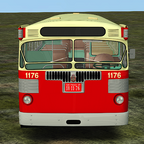Bald ist es so weit, unsere nächste Leitstellenfahrt findet statt. Es geht diesmal nach Ahlheim.
Weitere Informationen findet ihr hier: Zukünftige Leitstellenfahrten

» Adventskalender «
- Lizenzbestimmungen
- Creative Commons <by-nc>
- Empfohlene OMSI-Version
- Aktuell v2.3.x
- Vorausgesetzte kommerzielle Erweiterungen
- Keine
Twin Coach buses were produced from 1927 to 1955 by Fageol in Kent, Ohio, and from 1955 to 1958 by Flxible under the Flxible FT series designation.
These buses evolved through several generations, each with its own distinct design and mechanical features.
Gasoline and Propane Fageol or Hercules Diesel engines were available, always mounted underfloor. Some models featured two synchronized engines, which inspired the name "Twin Coach".
Spicer Manual or Automatic gearboxes were also available.
Twin Coach also offered articulated versions known as the "Super Twin", as well as trolleybus models for electric transit systems.
Compared to their main competitor—the GMC TDH “Old Look” buses—Twin Coaches stood out for their underfloor engine layout, which improved passenger comfort by minimizing noise and heat.
They also featured a torsilastic rubber suspension system developed by B.F. Goodrich. While this suspension provided a smooth ride, it was very difficult and expensive to repair, becoming one of the bus’s major drawbacks.
Twin Coach buses were sold to numerous cities across the United States and Canada, and also reached international markets.
Notable operators included:
BC Electric Railway (later BC Hydro)(British Columbia, Canada)
Seattle Transit System (Washington, USA)
Chicago Transit Authority (Illinois, USA)
San Francisco Municipal Railway (California, USA)
VBL (Verkehrsbetriebe Luzern) (Lucerne, Switzerland)
CMTC (Companhia Municipal de Transportes Coletivos) (São Paulo, Brazil)
Viação Cometa (São Paulo, Brazil)
Viação Relâmpago (Rio de Janeiro, Brazil)
This is the post war version, 41S, gasoline powered and automatic transmission.
Two versions are available: front boarding and CMTC Standard with rear boarding.
-
1.0.0
- 56,92 MB
- 17k Downloads





